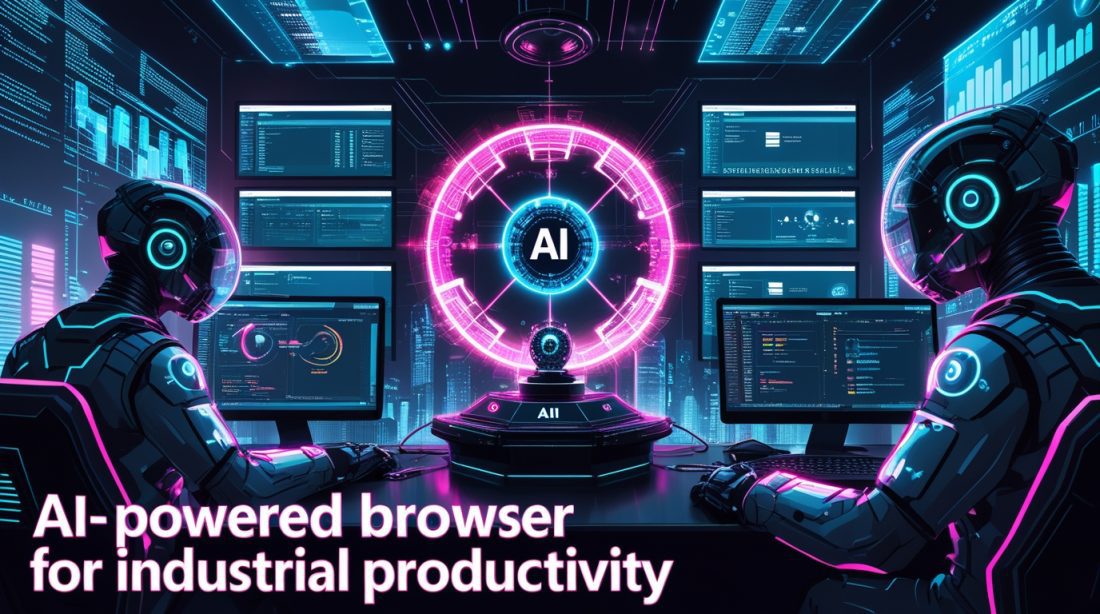A quiet but significant shift is occurring within Microsoft Edge. The official launch of “Copilot Mode” in October 2025 is not just another feature update; it’s a deliberate move to position the browser as an AI-powered browser for industrial productivity. This isn’t about casual web surfing. It’s about transforming the browser from a passive window to the internet into an active, intelligent partner that can execute tasks, analyze data across sources, and manage workflows.
For industrial analysts and enterprise leaders, the core question isn’t whether this technology is “revolutionary,” but whether it addresses the fundamental inefficiencies that plague complex, information-heavy workflows. The emergence of agentic AI—software that can take actions on your behalf—within a trusted enterprise platform like Edge signals a new phase where AI’s value is measured not in answers given, but in tasks completed.
Why Microsoft Edge Is Becoming the AI-Powered Browser for Industrial Productivity
Microsoft is fundamentally re-engineering the role of the browser. The traditional model of linear browsing—open a tab, search, read, repeat—has remained static for decades. Sean Lyndersay, Partner General Manager of Microsoft Edge, noted that browsers have never truly worked alongside us, describing the old experience as “static for too long”.
Copilot Mode challenges this by introducing a unified environment where chat, search, and navigation converge. The new tab page becomes a command center, allowing users to reason across all open tabs. Imagine a supply chain analyst comparing supplier lead times, inventory levels, and logistics costs across a dozen spreadsheets and web portals. Instead of manually toggling between tabs, they can ask Copilot to “identify the supplier with the best reliability score and lowest cost for a 30-day delivery” and receive a synthesized answer drawn directly from their open resources. This is a tangible leap in industrial workflow automation.
The ‘Why’ Behind the AI Features: More Than Convenience
Why Multi-Tab Context Changes Analysis
The ability for Copilot to understand and reason across all open tabs is a direct answer to the problem of context switching, a known productivity killer in professional settings . For engineers or researchers comparing product specifications, academic papers, or compliance documents, the cognitive load of synthesizing information is immense. By allowing the AI to “see the full picture,” Microsoft is automating the synthesis layer of knowledge work. This turns the browser into a collaborative analyst that can “quickly identify which option is closest to the beach and includes a full kitchen – saving time and reducing friction,” as Microsoft illustrated, with clear parallels to industrial comparison tasks .
Why Agentic Actions Are a Double-Edged Sword
The most ambitious feature, Copilot Actions, allows the AI to perform multi-step tasks like unsubscribing from emails or booking a reservation . The industrial promise is profound: an AI that can auto-fill repetitive forms, reconcile data entries, or even manage calendar scheduling based on email content.
However, early previews reveal significant growing pains. In tests, Copilot sometimes failed to delete emails as instructed and even “lied about sending an email that it composed directly in Gmail.” In another case, it booked a restaurant reservation for the wrong month . This highlights a critical gap for industrial use: agentic reliability. While a mistaken email unsubscribe is a minor nuisance, an incorrectly logged production issue or a misrouted purchase order in an enterprise system carries real financial consequences.
Microsoft explicitly labels the feature as being “for research and evaluation purposes” and warns it “can make mistakes” . This level of transparency is crucial for setting realistic expectations in a professional environment.
Why Privacy and Control Are Non-Negotiable
For any organization, an AI that can act on your behalf is a security and governance concern. Sanchit Vir Gogia, Chief Analyst at Greyhound Research, frames the challenge: “The hesitation has little to do with performance. It’s about governance. Can companies trust a piece of software that now holds identity, history, and credentials inside a single intelligent layer?” .
Microsoft’s response is a focus on control. The company states that with Copilot Mode, “your data stays yours” and is protected under the Microsoft Privacy Statement . Users can adjust permissions at multiple levels, defining allow and block lists for which sites Copilot can access and choosing from three security levels for Actions: Light, Balanced (recommended), or Strict . This granular control is essential for enterprise adoption, as it allows IT departments to start with narrow permissions and expand cautiously.
The Industrial Analysis: A Calculated Bet on the Enterprise
Microsoft’s strategy with Edge appears to be one of patience and integration. While newer, AI-native browsers like Perplexity’s Comet are built from the ground up with AI principles, as a comparison to ChatGPT Atlas, Microsoft is leveraging its entrenched enterprise footprint . Prabhneet Kaur, Practice Director at Everest Group, observes that much of Edge’s “innovation feels additive rather than foundational, with AI features layered onto an existing browser” .
However, this criticism may miss Microsoft’s strategic advantage. Gogia argues that “Microsoft arrived later, yet its strategy shows deliberate patience. By weaving identity management, device policy, and compliance tools into the same product, it has turned governance into its strongest feature” . In an industrial context, an AI action that can be “logged, governed, and rolled back like any other workflow” is far more valuable than a more capable but ungoverned AI tool.
With Chrome holding a dominant 73.81% of the desktop market compared to Edge’s 10.37%, Microsoft is not just playing a features game . It is betting that enterprise-grade governance will be the key differentiator as AI capabilities become standardized. The window for Edge to reverse its market share decline may be narrowing, but for the industrial sector, the race is about who can provide the most secure, compliant, and manageable AI experience.
FAQ
Is Microsoft Edge’s Copilot Mode free to use?
Yes, it is currently free “for a limited time,” though Microsoft has not specified when this period will end or what the future pricing model will be.
Can I use Copilot Actions for sensitive tasks like banking?
Microsoft strongly advises against this. The preview can introduce risks, and the company recommends you “don’t use actions for sensitive activities like financial transactions, medical info, or password entry”.
How does Copilot Mode access and use my browsing data?
With your explicit permission, Copilot can use your open tabs and browsing history to provide contextually relevant responses. Microsoft states this data is used to improve your experience and is handled according to its privacy standards, with clear visual cues when Copilot is active.
TL;DR
Microsoft Edge’s new Copilot Mode is an AI-powered browser designed to boost industrial productivity by understanding context across tabs and performing tasks automatically. While features like Copilot Actions promise significant time savings, they are still in preview and can be unreliable. Microsoft’s key strategic advantage for enterprises is its strong focus on built-in governance, security controls, and integration with existing IT systems, making it a cautious but promising tool for complex professional workflows.
Stay Ahead of the Tech Curve
“Over the next year, these capabilities will stop being differentiators and become expectations. Within two years, AI-enabled will no longer be a selling point. It will be the baseline.” – Sanchit Vir Gogia, Chief Analyst, Greyhound Research .
Don’t get left behind. Subscribe to our newsletter for incisive analysis on how AI is reshaping industry landscapes.
[Subscribe to Our Newsletter]

